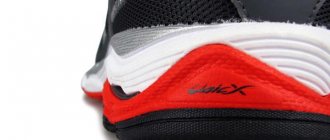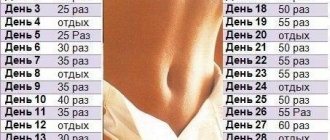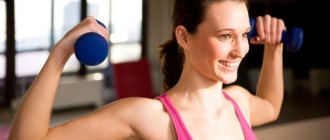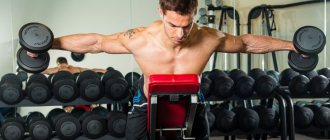Check out our recommendations for choosing the best yoga mat in this article.
So, let's start in order:
- Do you need a yoga mat?
- Review of the best yoga mats
- How to choose a yoga mat based on your fitness level
- How to choose a yoga mat by price
- How to choose a yoga mat by brand
- Yoga mat sizes: different lengths for different heights
- When rug width matters
- How to choose a good yoga mat thickness?
- What is the best yoga mat material?
- Can the color of your yoga mat affect your practice?
- Features of choice: what to look for?
In a world full of stress and chaos, it's easy to see why more and more people are turning to meditation and relaxation exercises to rejuvenate.
Yoga is a holistic practice that promotes a healthy mind, body and spirit. If your busy schedule does not allow you to visit a yoga studio, there is a way out - to practice from the comfort of your own home, performing asanas (poses) at a convenient time of day. All you need are yoga videos or online classes, a special mat, and some floor space!
Yoga will help you find inner peace
Review of the best yoga mats
A good yoga mat admittedly won't be the cheapest option. Consider it a long-term investment, especially if you plan to take your classes seriously, because it will last you for many years.
Here are the 6 best yoga mats according to our experts:
- Manduka Pro Mat – if you need a super elastic mat. While this mat is not ideal for hot yoga, it is great for home practice. With a thickness of 6mm, the mat has excellent cushioning (important for sore joints and sensitive knees and elbows) and a grippy structure for stability. The mat does not absorb foreign odors and does not leave a rubber smell on your hands, as it is made of environmentally friendly biodegradable PVC. Does not contain toxins such as phthalate. Manduka has been at the top of the list of the best yoga mat brands for many years.
- Ego Yoga Sky Mandala – mat and towel in one product. For those who sweat a lot while doing hot yoga (such as Bikram or Hot Vinyasa). The top layer of the mat is an ultra-absorbent microfiber cover that is bonded to a rubber base. The more you sweat, the more grippy the mat becomes, allowing you to focus on long asana holds, flows and inversions without the fear of slipping and hurting yourself. Plus, the rug is very beautiful!
- Ako Yoga Yin-Yang Studio Rishikesh. Want to get the most bang for your buck? Yoga instructors recommend a Rishikesh mat made of high-strength PVC with a reinforced mesh inside. The yoga mat is wear-resistant, with good adhesive properties and an optimal thickness of 4.5 mm. Suitable for both home and studios. Doesn't curl or move even during intense practice. Available in different colors and sizes.
- Manduka EKO SuperLite Travel Mat is a portable mat. If you want to take your mat with you when you go on vacation, you'll want to invest in something lighter than a standard home/studio mat. This ultra-thin mat can be folded into A4 format and placed in your purse or suitcase. Eco-friendly, made of natural rubber. You can choose from standard colors and limited edition colors.
- RamaYoga Revolution PRO – 4mm mat offers impeccable grip, ample cushioning and light weight. The mat is made from natural rubber, obtained from rubber trees, which is a rapidly renewable resource. Produced at a factory in Spain exclusively for the RamaYoga brand. Complies with European environmental laws.
- Ako Yoga Gang is a high-quality PVC mat, an excellent option for beginners and those who need good shock absorption, because the thickness of the mat is 6 mm. Despite this, it is very light, only 1.5 kg, so it is convenient to carry it with you to the studio or for outdoor activities. Suitable for fitness and other sports. Wear-resistant, soft and beautiful. The color is not monochromatic, but with streaks - it looks original. Brand country Germany. Country of origin: China.
Budget rugs (PVC rugs)
When choosing a yoga mat, many beginners initially pay attention to budget options, which is especially logical for those who are not yet fully confident that they will practice regularly and are not ready to spend more than a certain amount on a new hobby. Let's start with what requirements an inexpensive yoga mat
:
1. Don't slip on the floor
2. Prevent slipping during practice
3. Be durable enough
4. Have a comfortable length, width and thickness for a yoga practitioner
The first 3 points depend directly on the material from which the rug is made. There are 3 generally accepted base materials from which rugs are made. These are: PVC (polyvinyl chloride), TPE (thermoplastic elastomer) and rubber. They can also be combined.
We do not recommend purchasing yoga mats made from the following materials:
1.PPE. In fact, this is a tourist foam, which, firstly, slides heavily on the floor, and secondly, is not at all wear-resistant. Considering it a yoga mat is completely wrong, even if the seller claims it as a yoga mat
2. Izolon. It’s also more like a travel mat that slides on the floor, is very bulky during transportation, has poor anti-slip properties, and wears out quickly
3. EVA. It slides on the floor and wears out quickly.
The optimal budget options that meet the basic requirements for a yoga mat include, first of all, PVC yoga mats
.
Until 2013, the niche of budget PVC rugs consisted mainly of Chinese rugs. Their advantages include acceptable stickiness to the floor, a large number of colors, and low weight.
Of the minuses, it is worth highlighting: not the best anti-slip properties. But everything is learned in comparison, especially with mats made of PPE, EVA and other unsuitable options.
The main disadvantage
These rugs are wear-resistant; these rugs wear out very quickly and crumble.
The characteristic texture of these rugs is the texture of pimples.
Similar rugs are available in many stores, including chain stores.
They are available under different brands, in different colors and thicknesses. In fact, any company can make such a rug under its own brand. The price of such rugs depends on the pricing policy of the company, brand, size of the rug and sometimes the design on it.
The most important difference between these mats is their density, which determines their wear resistance.
There is also a big misconception about the thickness of such rugs. Very often, beginners try to choose a thicker mat so that they can practice comfortably, but this is a double-edged sword. The optimal thickness for such rugs is 4 mm.
Often such mats are found with a thickness of 6 mm, 8 mm and even 1 cm. In this case, such thicknesses will most likely not bring comfort, but on the contrary will interfere with practice
.
The fact is that with such thicknesses, the mat is simply very foamed, but its density is very low, due to this it is difficult to maintain balance on such mats. They are also not suitable for dynamic practices; the mat is pressed through. Also, similar rugs often have a length of 173 cm. The standard European length is 183 cm
Since 2013, our company has introduced an alternative to cheap Chinese rugs
. Our company's assortment now includes Russian-made PVC rugs, made by analogy with popular German rugs.
Due to the localization of production, we were able to make excellent rugs at an affordable price.
The texture of the rugs is different from the cheap Chinese options; it resembles a rough orange peel. The mat is much more wear-resistant than any Chinese analogue; lengths from 175 to 200 cm are available in the range
And most importantly, the mat is much denser. The only nuance in this line is the thickness. Only one 3mm thickness available.
But as we said earlier, the thickness of the rug is a relative value. These rugs are initially dense and will be better than thicker Chinese rugs.
The best indicator of the quality of our Russian rugs is customer reviews
.
We leave all reviews, including criticism, but don’t forget that this is a budget option, and you won’t be able to get a flying carpet for 550 rubles.
But in terms of price-quality ratio, these rugs will definitely not disappoint their customers.
List of products
- Yoga mat Ako Yoga Yin-Yang Studio 175x60x0.45 cm
Budget-friendly, made of PVC, compact, soft, non-slip, for beginners and professionals.
2,530 ₽ More details
- Yoga mat Ako Yoga Gang 185x60x0.6 cm
Budget-friendly, PVC, soft and thick, non-slip for beginners and pros
2,900 ₽ More details
- Hit
Yoga mat Manduka EKO SuperLite Travel Mat 180x61x0.15 cm
Premium, Rubber, Non-slip, Tough, Thin, Lightweight, Travel
Rating 5.00 out of 5
4,930 ₽ More details
Rubber and microfiber, natural, patterned, wide, professional
5,500 ₽ More details
Premium, made of rubber, lightweight and non-slip, natural, for beginners and pros
6,590 ₽ More details
Premium, PVC, thick and soft, non-slip, wide, for beginners and pros
12,100 ₽ More details
A good mood during yoga directly depends on a comfortable mat.
Buying the best yoga mat is a big decision. A new mat can make a real difference to your practice.
Level of training
How to choose the right yoga mat, given the practitioner's skill level? Beginners tend to have easier poses compared to those with intermediate skills. The higher the level, the more varied the asanas, and it is important that the yoga mat can provide comfort as the difficulty also increases.
Here are some recommendations for choosing a rug depending on who you are buying it for: a child, a beginner or a pro.
Mat for children
As yoga becomes more popular, parents are increasingly keen to get their children into the practice as early as possible. The first step in this direction is to buy a cute children's rug. What to look for when choosing the first mat for a little yogi?
Yoga develops concentration, balance, general mental and physical fitness of the child
Ideal children's rug:
- Safe: non-toxic, eco-friendly and easy to clean;
- lightweight – the mat should be easy to carry;
- non-slip – yoga mats are slightly sticky and should provide reliable grip for an active boy or girl;
- small – the length of the mat is 150 cm, which is optimal for a child;
- beautiful - a cheerful print or favorite color will delight your baby.
Check out our selection of kids yoga mats
How to choose a yoga mat for beginners?
If you are at the beginning of your journey to increased flexibility and enlightenment of your body and mind, you are probably wondering: “Which yoga mat is best to buy?”
For beginners, when choosing the most important exercise accessory, there are several qualities to consider: thickness, moisture wicking, slip resistance, stability and price.
Thicker yoga mats are ideal if you have joint pain. They won't provide good balance, but will relieve pressure on your knees. If you don't want to buy an expensive first mat, there are beginner models that are extremely affordable - but they usually aren't durable or as functional as higher quality ones.
Often it is the purchase of a mat that creates motivation for beginners to practice.
Whatever your ultimate goal in yoga, there is a mat that is right for you. Check out our range of beginner rugs. Check out our selection of yoga mats for beginners
Professional models
For pros in the art of yoga, natural materials are important. Luckily, more companies are making sustainable, pollution-free yoga mats.
Eco-friendly yoga mats are available in a variety of varieties today. Each one is designed for a specific yoga practice. Materials: Rubber, organic cork, jute and cotton are used to make natural yoga mats.
Professional yoga mats are recyclable
Eco-friendly rugs are good for your body, mind, soul and the environment. We have collected the best natural mats that will meet the needs of pros in the art of yoga. We invite you to consider a selection of yoga mats for professionals
Price for yoga mats
Generally, a simple, solid 3-4mm thick PVC yoga mat will be on the lower end of the price range. The price increases due to the product material, brand, individual design, antimicrobial and non-slip coating, complex textures and patterns.
Depending on the cost, yoga mats are:
- Budget - products from 600 rubles. The mat is good for beginners and those who have not yet decided what type of yoga and fitness they will practice. An inexpensive and simple mat is perfect for anyone who is afraid to pay the cost of more luxurious models.
- High-quality mats from 1890 rub. for children and from 2330 rub. for adults. Durable, with good sticky properties, do not stretch or crumble. Suitable not only for intensive home practice, but also for studios with high traffic volumes.
- Premium – eco-friendly mats made of rubber, biodegradable premium PVC, jute or cork for those who are serious about yoga and for a long time. Cost from 4200 rub. and higher.
We will tell you how to choose a yoga and fitness mat based on your budget
Eco-friendly yoga mats are at the top of the price range
Getting to know the brands
If you are one step away from choosing the right yoga mat and have already studied both the characteristics and customer reviews, you will be interested in learning a little about its manufacturer. Here are some details about the brands in our store:
- Ako Yoga is a German brand that has been producing PVC-based yoga mats since 1960. The main mission of the company is product safety. Since 2006, the products have been awarded the OEKO TEC Class 1 title. This means that the materials used are absolutely harmless and can even be used by children! Products are regularly tested by an independent laboratory.
- Ego Yoga is perhaps one of the most eco-friendly brands of yoga products. Its assortment includes original mats made of microfiber, cork and rubber. The line of premium mats with a non-slip coating deserves special attention; such products do not slip with either dry or wet palms. The company also produces nice covers, and more recently sadhu boards have appeared in their range. And all this is produced here – in Russia!
- Manduka is a leader in the yoga industry in the production of mats, stylish clothing and a wide selection of yoga accessories. By investing in rugs from this company, you can be sure that you will get the most out of the quality of the product. The products are environmentally friendly and biodegradable. Country of origin: USA.
- RamaYoga is a Russian brand that offers yoga products in an affordable price range for most buyers. RamaYoga Puna is the best budget mat from this manufacturer. Perfect for beginners and anyone who is not considering expensive options. You will be pleasantly surprised by the quality and range of colors. The mat is made of PVC and has an ideal thickness of 3-3.5 mm.
- Starfit is a budget brand. Country of origin: China. It is also latex-free for allergy sufferers, although some have noted that it may initially have a PVC odor, so the manufacturer suggests airing out the mat before first use.
- Wunderlich is a German brand of quality carpets. It is very popular in Russia because it is in the middle price range. The products comply with European environmental standards.
- Yoga Club is a famous Russian brand of designer mats and accessories. Rugs from this company are for those who love natural materials and beautiful appearance. The creators of the brand are experienced practitioners and know exactly what is important for a real yogi.
Mid-price rugs (PVC rugs)
Just a few years ago, in many articles one could very often find the opinion that PVC mats belong specifically to entry-level mats, i.e. the simplest, for beginners, the least durable, etc.
In fact, this is a big misconception, even premium class mats, for example, all Manduka PRO
made from PVC.
So what is the difference between rugs in the mid-price category, and therefore of higher quality, and inexpensive ones?
First of all, the quality of the material. Almost all mid-price rugs are made in Germany. Made in Germany marking
has long been an indicator of high quality goods.
The main difference between German and Chinese rugs is the quality of raw materials.
In the production
of German rugs,
higher quality PVC
is used .
Yoga mats are reinforced with a special fiberglass mesh. The quality of this mesh affects not only the wear resistance of the rug, but also its texture. Not a single German rug has a “pimply” texture; all rugs from Germany have more of an “orange peel” texture.
Very often, HD PVC is indicated in German rugs, i.e. High density PVC
.
Due to their texture, German rugs have better anti-slip properties; due to their denser material, they are more durable. These rugs also have European quality certificates, which also state that the rug is safe for the skin of children under 2 years of age.
In personal practice, such mats last for 3 years or more.
.
As a rule, German mats have 2 thicknesses: 3 mm for more static practices, such as Iyengar yoga, and 4.5 mm for a more universal thickness.
The width of such rugs can be standard 60 cm or increased 80 cm
. Length from 175 to 220 cm.
The most popular models in this price category
Yoga mat Yin-Yang Studio 3mm
Yoga mat Yin-Yang Studio 4.5 mm
Yoga mat sizes: different lengths for different heights
How to choose the length of a yoga mat? The size of an average yoga mat is 175-185 cm in length. The length of the mat is calculated based on your height. It is customary to add 5-10 cm to your height to determine the optimal length of the mat. The taller you are, the longer the mat you will need. It is also worth paying attention to the type of practice: for classes with stretching and throwing, you can safely add even 20 cm to your height; for classical yoga, plus 5-10 cm will be enough.
By length, rugs are divided into:
- Short – 150 cm option for children,
- Medium - 173 cm, 175 cm, 183 cm and 185 cm are suitable for most practitioners.
- Extended – 200 cm, 220 cm for tall yogis and those who simply want a longer mat.
Comfortable mat length – when the head and legs lie on the mat when performing Shavasana
Longer yoga mats are a little heavier to carry and bulkier when rolled up, but this is a minor drawback when compared to comfort during practice.
Types
We list the main types of mats for fitness and yoga:
- The “ab mats” mat is a short and fairly dense mat that will be comfortable when doing abdominal exercises. It is much thicker and stiffer than other types, but dynamic or strength training with such an accessory will not be comfortable due to strong sliding.
- “Workout mat” is an almost universal accessory. It is softer and longer, usually consists of several segments and can be folded. This option is convenient for non-professional training and home exercises. It provides sufficient cushioning and almost does not slip, but complex exercises cannot be done on it.
- “Mind body” is a one-piece mat without segments that needs to be rolled up. The cushioning is sufficient, you can perform any exercise. This is the best option for permanent or professional activities.
When rug width matters
The standard mat width is 60 cm – suitable for most practitioners. In addition to the classic width, you can also find yoga mats in widths of , , , 100 or 120 cm.
Wide models are for those who want a little more room to maneuver or have a larger build. In addition, they are good if you need additional space to perform such asanas when your arms and legs tend to move off the mat. This is also a suitable option if you want to increase the distance between you and the person next to you in the yoga studio.
It's important to consider the increased width when choosing a bag or mat cover. If you buy a cover for a standard width, the mat will stick out or won't fit at all.
A tie strap is a convenient option for carrying a mat of any width.
If you are taking a yoga class and the teacher says, “Put your feet the width of the mat,” your feet should be slightly narrower when your mat is wider than standard
Do you need a rug?
Do you really need a personal yoga mat? Undoubtedly, such an accessory can be called necessary. Firstly, it is worth buying it at least for personal hygiene purposes, since it is unsafe to work out on the floor or on a rug in common use, because bacteria can live everywhere. Secondly, the mat will provide you with comfort. You won't feel cold or harsh, and sometimes this is very important. Thirdly, if you buy a mat, you simply will not be able to quit classes (yes, this argument is important for some).
How to choose a good yoga mat thickness?
Yoga mats can be from 1 mm to 6 mm thick. To figure out how thick a yoga mat should be, it is important to consider your body weight and the style of yoga used for the practice.
What thickness of yoga mat is best? Why is it important? How comfortable your yoga mat will be depends largely on its thickness. Too thin and your knee may hit during Half Moon Lunge (Anjaneyasana). However, thick yoga mats can make it difficult to perform balance poses, as they will make you less stable, for example, in tree pose (Vrksasana).
A standard yoga mat is about 3.5-4.5 mm thick, and the thickest is about 6 cm. A yoga mat with optimal thickness is great for any style of yoga. Thicker mats are suitable not so much for yoga as for fitness (from 8 mm or more).
There are also thin options, often called “travel”, with a thickness of only 1-1.5 mm. They fold easily and weigh little, making them easy to fit in a suitcase.
The thickness of the yoga mat contributes to body comfort during classes
If you practice yoga with knee or wrist pain, it's worth investing in a thicker mat that will give your joints some protection
Original rugs
Cork yoga mats
The mat consists of two layers that are bonded under high temperature. The top layer is made from the bark of a cork tree. When cork is extracted, the tree itself does not suffer, because This is the only tree in the world whose bark is capable of self-regeneration.
The second layer is made of natural rubber and has good density and elasticity.
The thickness of such a mat is on average 4 mm and exercises on a hard surface will be more than comfortable. It can also be used as a gymnastic mat both at home and in gyms.
Manufacturers assure that the cork layer of the mat does not crumble at all during use and retains its original shape for a long time.
Sheep wool yoga mat
This cozy rug is made of natural sheepskin. The mat will protect you from the cold floor, provide pleasant tactile sensations and allow you to relax more after training. Some sites offer them as baby rugs made from eco-friendly materials.
In addition to sheep wool, the rug contains rubber, which is used to cover the backing, as well as polyurethane and acrylic.
Wool is a natural and renewable resource that is resistant to moisture, fire and dirt. Manufacturers of yoga mats made of wool claim an environmentally friendly and non-violent approach and cut the animals in such a way that they receive the least harm.
Round yoga mats
According to the manufacturers, round practice mats provide a 360-degree range of motion. In our opinion, they are not as comfortable as rectangular shapes. This is more like an addition to a future collection of yoga equipment.
Designer yoga mats
There are yoga mats with unusual beautiful designs and beautiful patterns.
What is the best yoga mat material?
Why is the material from which a yoga mat is made important? It's simple: it determines its texture, stickiness, environmental friendliness, shock absorption and how it wears over time.
Let's take a closer look at what material to choose a yoga mat from, and how they differ:
- PVC (polyvinyl chloride) – Most standard yoga mats are made from this material. If you want a tried and true sticky mat, choose a PVC mat that can withstand use for over a decade.
- Jute – If you support eco-friendly products, then this is an ideal choice. Jute mats have an organic roughness and provide good grip. However, they also have their drawbacks. Jute mats are made from porous plants and for this reason have the ability to absorb sweat. Over time, this will weaken the structure of the rug.
- Rubber is the choice of many yogis and environmentalists. This is also a cost-effective purchase - rubber models are very durable. They provide excellent grip no matter how vigorous your practice. However, avoid them if you are allergic to latex.
- TPE (thermoplastic elastomer) – TPE mats are suitable for fitness and yoga, they are softer, lighter and more flexible than PVC mats. More pleasant to the touch, keep their shape well. They do not fade in the sun and are resistant to frost. They don't slip, making them suitable for yoga.
- Cork – Eco-friendly yoga mats made from natural cork are free of harmful chemicals. Biodegradable and recyclable. The surface of the cork is naturally antimicrobial, making it suitable for allergy sufferers.
- Cotton is a natural material that is easy to care for and portable, and can be used over a studio mat for better moisture absorption during practice. Looks authentic!
- Microfiber - used in two-layer rubber-based mats. Suitable for hot yoga due to its good absorbent properties. Microfiber rugs most often have beautiful designer patterns; you can choose one that will reflect your inner world.
The non-slip surface of the cork yoga mat will provide traction during strength and hot yoga.
The above options are not all materials for making rugs; each of them has its pros and cons. Our specialists will help you decide!
What should fitness mats be like?
We list the requirements for fitness mats:
- The mat should absorb moisture. It is clear that you may sweat during exercise, and it will not be very pleasant to exercise on a surface that is damp from your sweat. Sometimes it's downright dangerous.
- The material should not stretch much. By doing stretching exercises, you don't have to worry about getting injured. So when purchasing, pull the mat. If it stretches too much, refuse to purchase.
- The mat should not slip, even on the slipperiest surfaces, such as laminate or tile. Increased slipping will make training ineffective, uncomfortable, and sometimes dangerous.
- This accessory should not distract from training or attract attention to itself, so avoid bright and “acid” shades, as well as large patterns.
- The mat should be soft enough to provide proper cushioning and support to the body. But such an accessory cannot be too soft.
- A high-quality and practical rug can be easily washed with water and regular soap, it’s convenient and quick. If the material can only be wiped with special wipes, then this will add unnecessary worries and problems.
- The accessory should not be too heavy.
Can the color of your yoga mat affect your practice?
If color psychology is close to you, then this information is for you:
- Red – attracts attention, stimulates, increases heart rate and increases blood circulation. In other words, it is a charge of energy.
- Orange – Sultry orange can bring a little levity to your practice.
- Yellow – Shiny, cheerful yellow can be the right yoga mat for those days when you feel sad.
- Green – often used to represent balance and harmony, provides complete relaxation.
- Blue – With the ability to calm the mind and aid in concentration, a blue yoga mat can help you accurately perform each pose to the best of your ability.
- Purple – Helps raise awareness to a higher level.
- Pink – If you are looking for healing energy and rejuvenation.
- White – if you want a good dose of emotional and mental cleansing.
- Black is the right color choice that will bring a relaxing component to your yoga practice, creating a calm and powerful relaxation without distracting attention from the mat itself.
Interestingly, many yogis choose blue as their preferred color.
Choosing the color of your yoga mat depends on what you like and what you want to achieve in your practice.
Color cannot be the only selection criterion. But it is definitely one of the main reference points for many, so we recommend using the filter by product color on our website
Features of choice: what to look for?
There are many yoga mats out there, and there is no one-size-fits-all choice, so consider the following tips before purchasing your best mat based on its features:
- Large – a mat for tall yogis or those who need extra space during practice.
- Two-layer - a two-in-one product - absorbent microfiber instead of a towel and a rubber base. Ideal for hot yoga and those who sweat intensely during practice.
- Designer - beautiful, stylish and unique, for those who care about the visual effect.
- Hard – Hard mats are usually made of rubber. They are heavy but provide great stability for advanced yogis in challenging poses.
- Compact – for easy carrying and long trips.
- Lightweight – The lighter the yoga mat, the more comfortable it is to carry or take with you when traveling or visiting a yoga studio.
- Soft – Often made from PVC, it is lighter, less expensive and has more cushioning for beginners or those planning to use the mat for other workouts, such as fitness.
- Natural (ECO) – corresponds to the basic principle of yoga – to be closer to nature.
- Non-slip – mats with a non-slip coating will provide the maximum possible grip during practice, for both dry and wet palms and feet.
- With markings - for fine-tuning asanas - ideal for beginners.
- With a pattern – if you want to stand out among others in a yoga studio, choose a mat with a pattern that you like.
- Thick – Provides better support and shock absorption for joints, knees, heels, head and other parts of the body. Reduce pain in legs and ankles when sitting for long periods of time. However, they are bulky and can make balance poses difficult.
- Thin – preferred for poses that require balancing. Lightweight, compact. But not suitable for people with joint problems.
- Travel - travel mats can be as thick as 1 mm. It can be easily folded into a square and placed in a regular suitcase or handbag. This mat can be used over a studio mat to ensure hygiene.
- Wide – ideal when performing shavasana; your hands will not touch the cold floor.
A yoga mat should be able to assist in performing difficult exercises
Whatever style of yoga you master, it is important to ensure comfort in order to get all the benefits of this practice. If you still have questions about how to buy a good quality yoga mat, write to our managers or call +7 (495) 128-6112, Experienced yogis and yoginis will be happy to choose the option that will ensure a fruitful practice! View all rugs.











